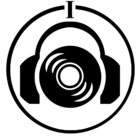I understand the Port is best suited to have an amplified input (such as a stereo receiver) connected to it and the Amp is best suited for a non-amplified input (such as a turntable or speakers) connected to it.
My question is, can a stereo receiver still be connected to the Amp? If so, are there any negative impacts?
Thank you.
Port vs. Amp
This topic has been closed for further comments. You can use the search bar to find a similar topic, or create a new one by clicking Create Topic at the top of the page.
Enter your E-mail address. We'll send you an e-mail with instructions to reset your password.


